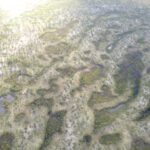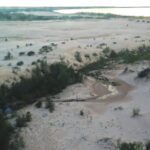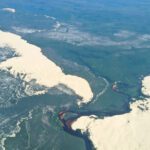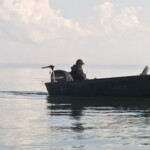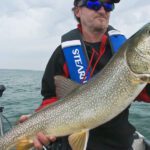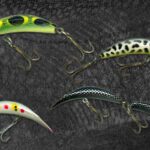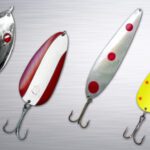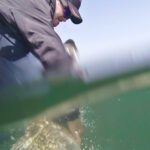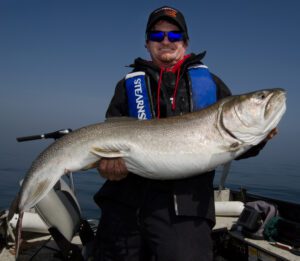There are not a lot of things that a single country can claim sole ownership of. In terms of fishing, though, Canada holds some impressive bragging rights. For instance, the majestic and powerful Lake Trout. Nowhere else in the world will you find such a vast array of colour, shape, and size of Lake Trout as you will in Canada.
This fishing Mecca has posted, held, and broke more world record lakers than anywhere else on the globe! So it’s pretty obvious this episode is all about Lake Trout—big, nasty, carnivorous lakers.
Pete travels to Lake Athabasca which straddles the Saskatchewan/Alberta border and sits just south of the Northwest Territories. He’ll be fishing in the Saskatchewan portion. This massive body of water is the eighth largest lake in Canada, with 7,935 square kilometres of fishing surface, and 2,140 kilometres of shoreline. It’s also up to 124 metres deep. This is an ocean compared to the lakes you usually see Ang and Pete on.
ATHABASCA LAKE TROUT
Here’s a stat for you: The biggest Athabasca Lake Trout weighed an astounding 102 pounds—the largest ever recorded! Unfortunately, it wasn’t taken on a rod and reel, but it does give you an idea of this trophy fishery.
Cap’n Bruce, host and owner of Lakers Unlimited, where we are filming, has assured Pete that, although he won’t catch any 100+ pound Trout, he does guarantee him a trophy. And that’s what this lodge is known for.
Ever since the completion of ice-out (which was only seven or eight days before Pete’s arrival), Cap’n Bruce and his guests have been going out, weather permitting, to a drop-off a few kilometres south of the lodge. Here, they wait for a particular moment in time—which, by the way, has not yet happened. That moment is a bug hatch when the water comes alive with insects.
KEEPING AN EYE ON CONDITIONS
By combining a drift using the wind with a touch of control from a tiller Merc, Pete fluttered a big bright spoon and swam a gigantic tube jig up and down the drop-off to efficiently cover it for hundreds of yards. With the water being so clear, these lakers will easily see the bait’s bright colours and/or the flash.
“My first Trout was a good one,” says Pete. “But not what I came here for.”
Weather conditions in the extreme north can change almost instantly. That can be a good thing or a bad thing. For Pete it was a great thing; the nasty sky started to break, so he moved out to a big flat with pockets of soft bottom perfect for a bug hatch. It was also a known spot for giant Trout.
What do tiny insects have to do with boating a 40-pound monster Trout? It’s called the food chain. The little fish gather to eat the insects and the big fish gather to eat the little fish.
Pete’s move proved to be the right choice. Bugs were on the lake’s surface and flying all around the boat. Perfect timing.
PHENOTYPES
One of the interesting things about the size of Lake Trout in deep, cold lakes is that they grow very slowly up to a point, then they spurt exponentially. Simply put, they don’t get big eating bugs; when they finally get big enough to eat other fish, that’s when they really start growing. So taking big fish out makes no sense if you value a trophy fishery. No matter where you’re fishing, take pictures of your prized catch and put ’em back.
On big, deep water lakes, there are “Phenotypes” of Lake Trout, meaning their appearance and shape are different from each other. It’s the same species of fish, just a different look.
Environmental conditions can influence the colour or hue of a laker. For instance, tea-coloured water will produce darker fish and lighter gin-clear water like Pete’s in today will produce lighter coloured fish. Also, the shallower the Lake Trout live, the lighter the skin colour.
And finally, big lakes = big fish.
TAKING ADVANTAGE
Pete trolled big wobbling plugs with four to eight ounces of weight on this flat. The combination of all that weight plus the front end of the diving bait constantly biting into the rocks, mud, and whatever else that lays at the bottom, makes the fish think of a digging Whitefish or Burbot—a delicious meal for a hungry Trout.
Pete had an outstanding outing on Athabasca. He found his insect hatch which was being fed on by baitfish, and they were being fed by big Lake Trout. This is a perfect example of keeping an eye on the conditions and then taking advantage of it.



